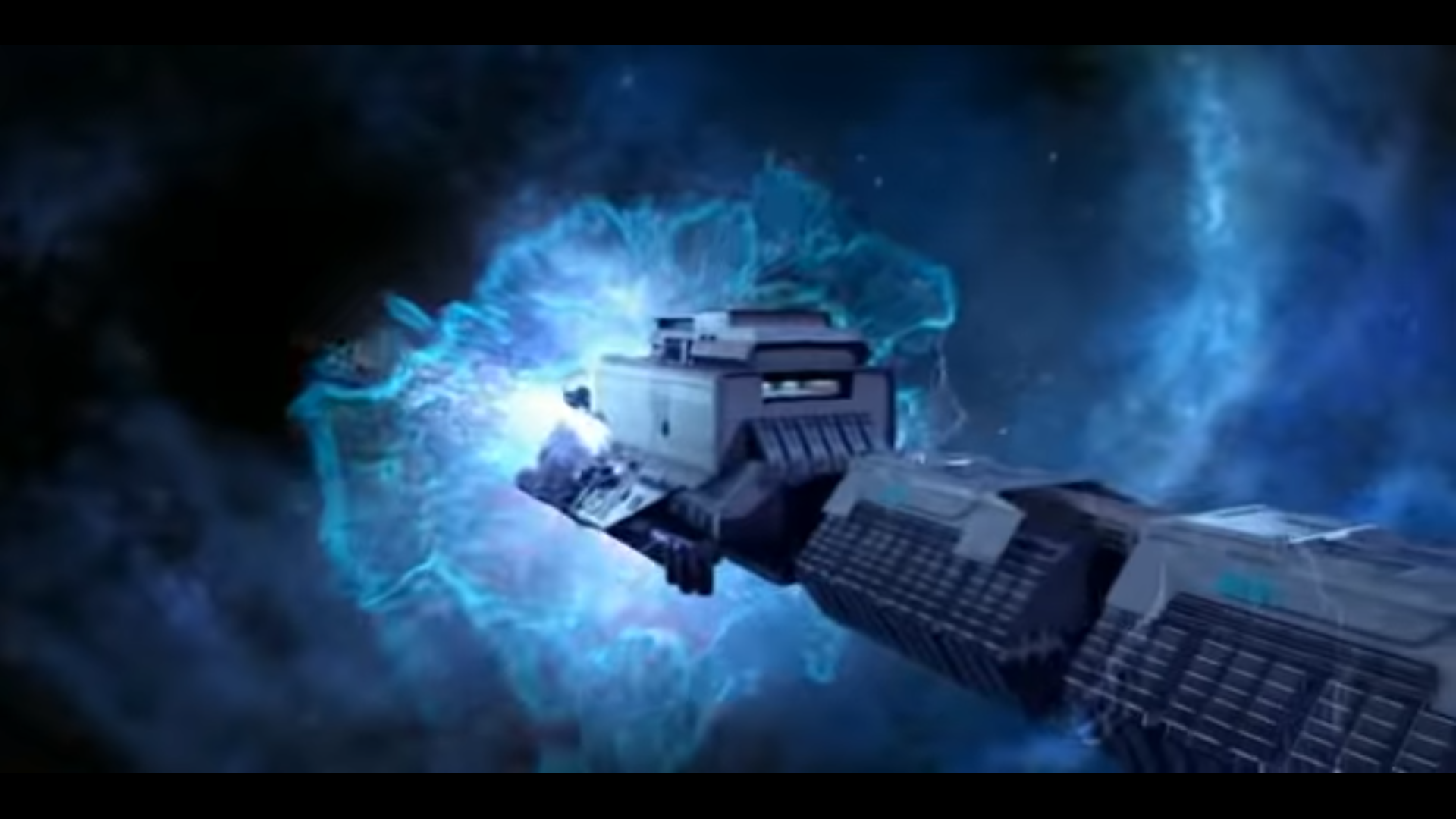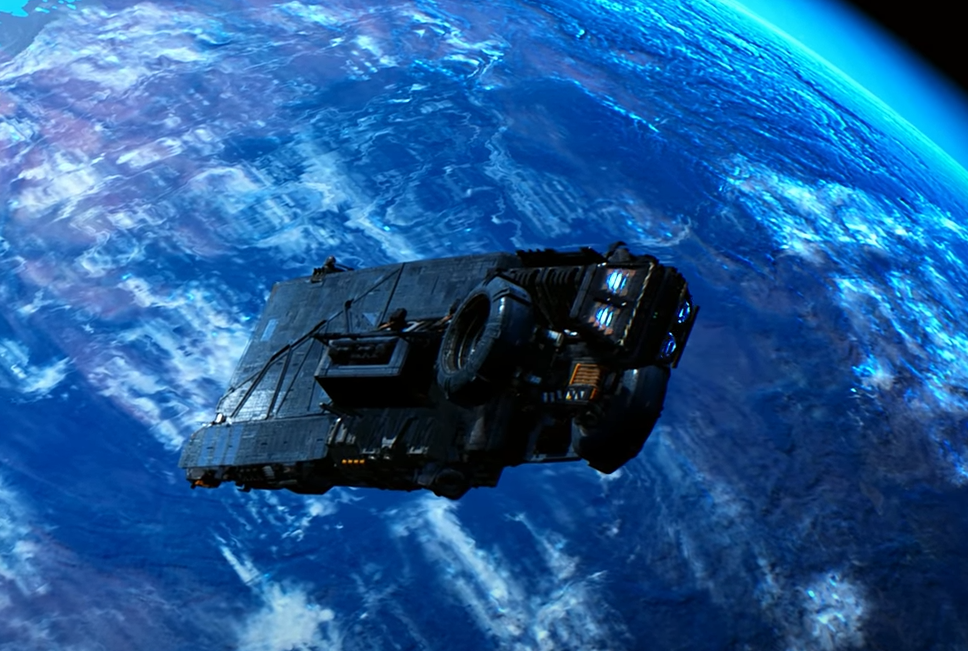The Dawson-Sirenko-Mayer Experiment
With Humanity growing more and more desperate for a scientific solution, an independent commission was tasked to investigate a mysterious disaster that occurred at the Deimos Particle Accelerator facility. Their findings eventually led to the discovery of the Dawson-Sirenko-Mayer particles, which in turn led to the creation of an experimental FTL technology that finally opened the door to interstellar travel. Officially named the Dawson-Sirenko-Mayer singularity generator, this innovative use of linear particle accelerators offered promises of instantaneous travel through artificial traversable wormholes. With the first successful prototypes completed and tested between 2111 and 2118 by major companies and national organizations alike, the DSM drive became the seed to humanity's last hope. Now ready to take their destiny in their own hands, the United Nations launched in the following year the Odyssey Initiative, a vast program whose aim would be the eventual evacuation of humanity towards Alpha Centauri.
Phases
The Odyssey Initiative was envisioned as a decades-long endeavor, with three waves, or phases, required to achieve its intended goals. Despite the intervention of nearly all major nations in the world, the successful colonization of Alpha Centauri was indeed such an arduous task, especially in the middle of a resource shortage crisis.
Phase One: Colonization
The first phase of the Odyssey Initiative was the colonization of Proxima Centauri b, which had previously been identified as a near-Earth planet. This would be done by a fleet of thirteen arkships, each built to operate independently for the three decades that the flight was expected to last. In case of any system failure, however, numerous automated refineries and manufacturing facilities were also to be used to repair the ship and provide the settlers with basic supplies. With a total population of 65 million colonists, the first phase was already a significant effort that was meant to provide a stable and self sufficient base of operation for the next phase.
Phase Two: Expansion
The second phase of the Odyssey Initiative was the expansion of the first cities established on Proxima Centauri b, as well as an expansion of the logistical capabilities used to send resources and people between the planet and the Solar System. While the first industrial facilities are established on the planet, a more conventional fleet of freight and passenger ships, relying on expected improvements on the DSM drive technology, would travel back and forth between the two systems. As more people and machinery reach Proxima Centauri b, the influx of resources sent back to the Solar system would then be used to start the construction of a vast evacuation fleet in preparation for phase three.
Phase Three: Evacuation
The last and, strangely, shortest phase of the Odyssey Initiative, is the evacuation of the Solar System towards Alpha Centauri. While not all of Mankind would need to be evacuated, the dilapidated state of Earth and the few resources left to exploit in the Solar system would force a vast majority to leave. This would be done by an enormous fleet of transport ships, carrying not only passengers but also materials required for their accommodation on Alpha Centauri. Those that remained in the Solar System would then be able to slowly restore Earth by salvaging and recycling the unused infrastructure into usable agricultural and ecological capabilities.
Development
Despite its noble goal and international sponsors, the Odyssey Initiative was not without its own share of challenges and issues. As individual nations also had their sights on their own colonization program, the UN initially struggled to convince its members to participate. A compromise was eventually achieved, with the 13 initial colony ships divided between the 87 participating nations. This caused some tensions between these nations and those unable to participate, as they would undoubtedly have the upper hand on Proxima Centauri b. Construction of the 13 colony ships began in late 2127 in various locations throughout the Solar System, such as the Lunar and Martian orbital shipyards. The design and construction of the 13 ships, however, proved to be much more difficult than initially anticipated, with several resource shortages and increased tensions between nations slowing the overall program down to a slog. As the years went on, the Initiative was eventually scaled down to only one ship, the UNS Ulysses, which was completed in 2145, more than 20 years after the program's creation.
With its sister ships either sold for scrap or repurposed by their new owners, the Ulysses launched in 2147 after two years of trials, carrying in cryosleep five million colonists, chosen from the best of the remaining 26 participating nations, along with all the knowledge and materials required for a new colony. Unfortunately, having so few nations commit to such a significant investment of resources and manpower proved to be a weakness that others tried to exploit. Due to decades of shortages and the associated rising political tensions, the Solar system was on the brink of war when the Ulysses left for its first journey. Having such a vessel, filled with the best people and equipment available, leave the system permanently was an opportunity that more than one decided to act upon. As the Ulysses sailed past Neptune's orbit, an alliance of nations annexed multiple vital mining stations and cities, spiraling the system into a full-blown interplanetary war.
Now too far away to return in time, the Ulysses was also the target of these opportunistic nations, as a small fleet of military ships was dispatched to intercept and most likely repurpose the lone colony ship. With little choice left, the Ulysses continued with its original plan and performed its first jump on November 15th, 2147, never to be seen in the Solar system again. Luckily, despite some instabilities in its design, the experimental DSM drive proved to be working within the expected parameters. For the next 30 years, the Ulysses continued on its journey towards Alpha Centauri, with the crew having nothing but hopeful thoughts to think of home. Upon arrival to Proxima Centauri b, however, it was discovered that the planet was a barren world, barely more livable than Mars. As any hope for further instructions or reinforcements were non-existent for the past thirty years, and knowing of the failed terraforming efforts of Mars and the limited supplies available to its colonists, the Ulysses decided to look for a more suitable planet. As this search would undoubtedly take centuries if not millennia, the crew installed an autonomous procedure within the ship's AI, relieving full control of the ship to this immortal peer. As expected, this search went on for tens of thousands of years, leading to significant unrepairable damage and casualties among its passengers. Eventually, however, the Ulysses reached the Aurigan System, and made history.
Closure
Due to software and hardware failure of the Ulysses' computer systems, the exact date of arrival in the Aurigan system is not clear, even to this day. Scientists estimate that the Ulysses spent between 27 000 and 46 000 years in transit, analyzing over fifty million stars and their systems on its way. One of these systems, originally named DSSp L154371.58−005344.61 by the Ulysses' astronavigation computer, was identified and selected for further study by the ship's AI, leading to a centuries-long deceleration period. Using the modern calendar, the Ulysses arrived in the Aurigan system on February 27th, 0 After Planetfall. Preliminary scans of the targeted planet revealed a very close match to prehistoric Earth, with large mammals and reptiles living in an oxygen-rich atmosphere. Finally satisfied, the Ulysses's AI started its planetfall procedure, waking up the first batch of settlers on June 12th. During its journey, the Ulysses sustained heavy damage from a lack of maintenance and various hazards, with casualties in a multitude of cryo-bays. Still, the first settlers that woke up remained steadfast in the face of the coming hardships, repairing and salvaging what they could before exploring their new home.







Comments